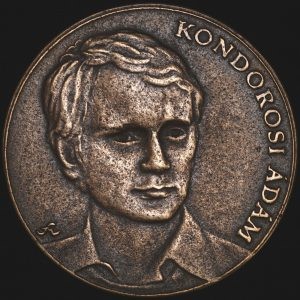The Adam Kondorosi Academia Europaea Award for Advanced Research #
The award will be presented on Thursday 24 October 2019, at Conference Room Oriol Bohigas, of the Ateneu of Barcelona to
Professor Ray Dixon, John Innes Centre, Norwich#
Professor Dixon will deliver the Lecture:
“Engineering Biological Nitrogen Fixation for Agricultural Benefit”
The laudation will be given by Professor Jens Stougaard MAE, Aarhus
“The Adam Kondorosi Academia Europaea Award for Advanced Research” recognizes landmark research in symbiosis and related fields that has changed our understanding and made a significant scientific impact. It will be presented at the Academia Europaea-YAE conference to Professor Ray Dixon
 (John Innes Centre, Norwich, UK) for his work on molecular understanding of biological nitrogen fixation in bacteria and its regulation in response to environmental cues.
(John Innes Centre, Norwich, UK) for his work on molecular understanding of biological nitrogen fixation in bacteria and its regulation in response to environmental cues.
The awards consist of a diploma/medal and prize money. This prize was established in recognition of the significant achievements made in the field of plant and microbe interactions and symbiotic nitrogen fixation by the late Professor Adam Kondorosi.
TITLE AND FULL NAME: Professor Ray Dixon FRS
AFFILIATION: John Innes Centre, Norwich, United Kingdom
LINK TO WEBPAGE: https://www.jic.ac.uk/people/professor-ray-dixon

TITLE OF PRESENTATION: “Engineering Biological Nitrogen Fixation for Agricultural Benefit”
ABSTRACT:
The practice of applying chemical fertilisers to increase crop yields has had an enormous impact on world agriculture but has resulted in severe agronomic and environmental penalties, including eutrophication of aquatic systems and atmospheric pollution. In order to circumvent this nitrogen problem, it has been proposed that biological nitrogen fixation (BNF) could be exploited to provide a more sustainable alternative to the use of nitrogen fertilisers in agriculture. Two potential approaches to enable cereals to benefit from BNF will be described in this presentation: firstly, the engineering of diazotrophic bacteria that can excrete ammonia as a nitrogen source for plants and secondly, the direct engineering of the nitrogen-fixing enzyme, nitrogenase into cereals.
BIOGRAPHICAL NOTE:
Ray Dixon is a Director of the JIC-CAS Centre of Excellence in Plant and Microbial Science and former Head of the Department of Molecular Microbiology at the John Innes Centre. He has pioneered research on genetic and biochemical analysis of biological nitrogen fixation for almost 50 years. In 1972, he successfully transferred the complete cluster of nitrogen fixation (nif) genes from Klebsiella pneumoniae to Escherichia coli, thus creating the first engineered diazotroph. His research has had a major impact on our understanding of how nitrogen fixation is regulated at the molecular level in response to environmental factors and in particular how multiple signals are communicated to the transcriptional apparatus via signal transduction pathways. He also has extensive knowledge of the biological functions of genes required for the regulation, biosynthesis and activity of nitrogenases. In collaboration with colleagues in the China and Brazil he is exploiting this knowledge for re-engineering diazotrophic endophytes that efficiently transfer fixed nitrogen to crops and developing strategies for the expression of nitrogen fixation genes in eukaryotes.
TITLE AND FULL NAME: Professor Jens Stougaard
AFFILIATION: Aarhus University
LINK TO WEBPAGE: http://au.dk/stougaard@mbg.au.dk

BIOGRAPHICAL NOTE:
Jens Stougaard is Professor of Molecular Biology and Genetics at Aarhus University and Director of the Centre for Carbohydrate Recognition and Signalling (CARB). Jens Stougaard leads a group studying plant genes regulating the development of nitrogen fixing root nodules and mycorrhiza formation in legumes. Currently the perception mechanisms for the bacterial Nod-factor and exopolysaccharide signal molecules, the function of receptors involved and the downstream signal transduction cascades are in focus. The plant model system used for this research is Lotus japonicus that form determinate root nodules. Lotus japonicus is also used for investigating the long range signalling integrating root nodule development into the general developmental program of the plant. Genetics, genomics and biochemical methods are used to identify and characterise components of regulatory circuits. In order to improve the genetic analysis, a large-scale insertion population based on the germ-line specific activity of the LORE1 retroelement has been established and made available to the community as a resource for reverse genetics in plants.
Download the announcement





